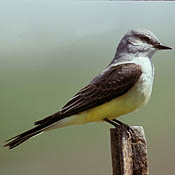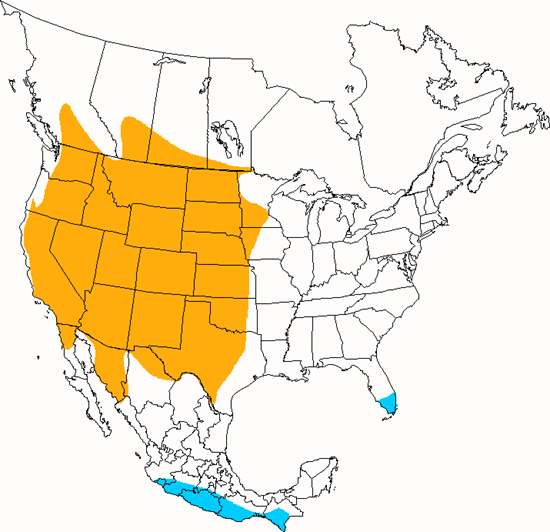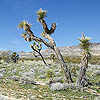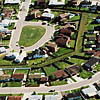Western Kingbird
Tyrannus verticalis

Perching

Length: 9 in. (22 cm )
An open country species, this kingbird is most commonly seen sitting on telephone or fence wires in agriculture areas and savannas. It aggressively chases hawks and ravens from its territory, and the nest is placed in an isolated tree or tall shrub. The Western Kingbird catches insects in the air but in late summer will eat some fruits.
The four-digit banding code is WEKI.
Bibliographic details:
- Article: Western Kingbird
- Author(s): Dr. Biology
- Publisher: Arizona State University School of Life Sciences Ask A Biologist
- Site name: ASU - Ask A Biologist
- Date published: 13 Jul, 2017
- Date accessed:
- Link: https://askabiologist.asu.edu/activities/bird/western-kingbird
APA Style
Dr. Biology. (Thu, 07/13/2017 - 15:38). Western Kingbird. ASU - Ask A Biologist. Retrieved from https://askabiologist.asu.edu/activities/bird/western-kingbird
Chicago Manual of Style
Dr. Biology. "Western Kingbird". ASU - Ask A Biologist. 13 Jul 2017. https://askabiologist.asu.edu/activities/bird/western-kingbird
Dr. Biology. "Western Kingbird". ASU - Ask A Biologist. 13 Jul 2017. ASU - Ask A Biologist, Web. https://askabiologist.asu.edu/activities/bird/western-kingbird
MLA 2017 Style
Be Part of
Ask A Biologist
By volunteering, or simply sending us feedback on the site. Scientists, teachers, writers, illustrators, and translators are all important to the program. If you are interested in helping with the website we have a Volunteers page to get the process started.









